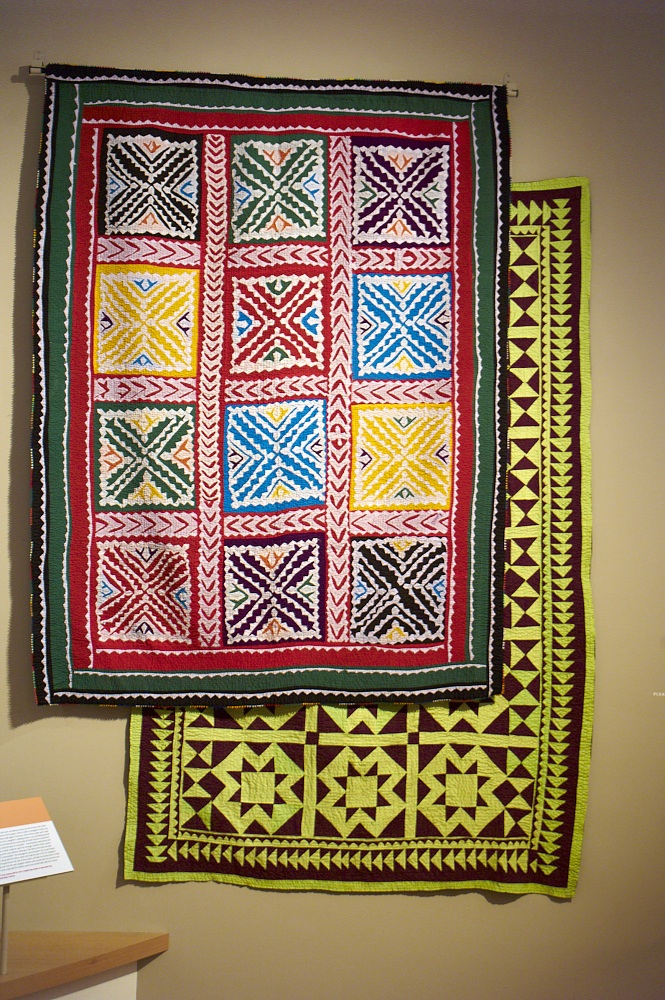Note: This continuing series reposts some of the most memorable columns of Suzy’s Fancy, which ran from 2009-2020. This piece originally ran in February 2012.
On a recent visit to the wonderful International Museum of Folk Art in Santa Fe, New Mexico, I was delighted to see a small exhibit of quilts made by women from the Sindh province of Pakistan.
This region of the Indian subcontinent has a rich and ancient tradition of arts and crafts, and it is particularly known for its various kinds of textiles, including the intricate appliqué, embroidered, and patchwork quilts known as rallis. Both Muslim and Hindu women make ralli quilts, and they have been doing so for hundreds of years.

Ralli-making skills are passed down from mother to daughter, and according to the foremost Western authority on ralli quilts, Patricia Stoddard—who wrote the only book on the subject, Ralli Quilts: Traditional Textiles from Pakistan and India (2003)—girls start making rallis when they are about 12 years old.
Stoddard states, “The sewing on the top of the quilt is usually the work of one woman and, traditionally, the sewing of the layers is done by a group of three or four women. (This is very similar to the American tradition of a ‘quilting bee.’) The fabric used for the back of the quilt is often an old head shawl or pieces of several old outfits dyed to be the same color. Special quilts may have a complete fabric on the back. The quilting is especially festive when the quilt is for a marriage, and the sewing is accompanied by singing and stories. There are also legends, folk songs and sayings about rallis.” Rallis are quilted on the ground, not in a frame.
Ralli quilts are integral to the culture of the area and are typically made by rural, poor, traditional women, some of whom are nomadic. Rallis are made primarily for bed coverings and floor coverings, or are sewn into sacks for holding various items. When they start to wear out from their initial use, they are then employed as padding for camel saddles, pack animals’ loads, or other utilitarian uses.
The number of ralli quilts which a family owns is sometimes considered an indicator of personal wealth, and they are an important part of a girl’s dowry. Rallis are also made as gifts for special occasions or special people such as holy men. In these cases, they may be embellished with shells, tiny mirrors, sequins, beads, extra embroidery or tassels.
More recently, ralli quilts have started to be made to sell as a source of income. The exhibit I saw at the Folk Art Museum featured such pieces. Extreme monsoon rains in 2010 caused one-fifth of Pakistan to be submerged under floodwaters for months, and caused 10 million people to lose their homes and incomes, forcing them into temporary relief camps.
According to the exhibit brochure, The Arts of Survival, “As days in the camps became months, the women—many from the famous quiltmaking region of Sindh province—turned their master needlework skills into a source of income, as well as comfort and warmth. With the help of their ever-present needle and thread, they transformed the extra clothes and materials sent by relief organizations into…rallis for sale in nearby stores and markets.”
Anyone who loves quilts knows of their many uses, their deep traditions, and their healing power. Ralli quilts from the Indian subcontinent are proof that such characteristics hold true in every corner of the globe.



